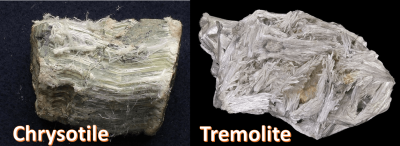
“Asbestos” is the generic designation given to six naturally
occurring mineral fibers including the serpentine mineral, chrysotile,
and the five amphibole minerals, actinolite, amosite, anthophyllite, crocidolite,
and tremolite.
Chrysotile is, by far, the fiber most used by manufacturers of construction,
industrial, automotive, and consumer products. Not surprisingly, manufacturers
routinely assert that exposure to chrysotile asbestos presents less or
no risk of developing mesothelioma or, in other words, that chrysotile
is “Safe” asbestos.
A study published on October 21, 2020 in the peer-reviewed journal,
Occupational Environmental Medicine strongly rebukes the notion that chrysotile is “Safe” or,
for that matter, any less dangerous than amphibole asbestos.
The study, which utilized data collected from a case–control study
of 580 subjects in the United States, found that exposure to chrysotile
and amphibole asbestos was associated with increased risk of mesothelioma.
In fact, the study found that the risk of mesothelioma from exposure to
chrysolite asbestos only is not significantly less than exposure to a
mix of amphibole and chrysotile asbestos.
Based on these findings, the authors of the study concluded that policies
aimed at regulating asbestos should target both pure chrysotile and mixtures
of amphibole and chrysotile asbestos.